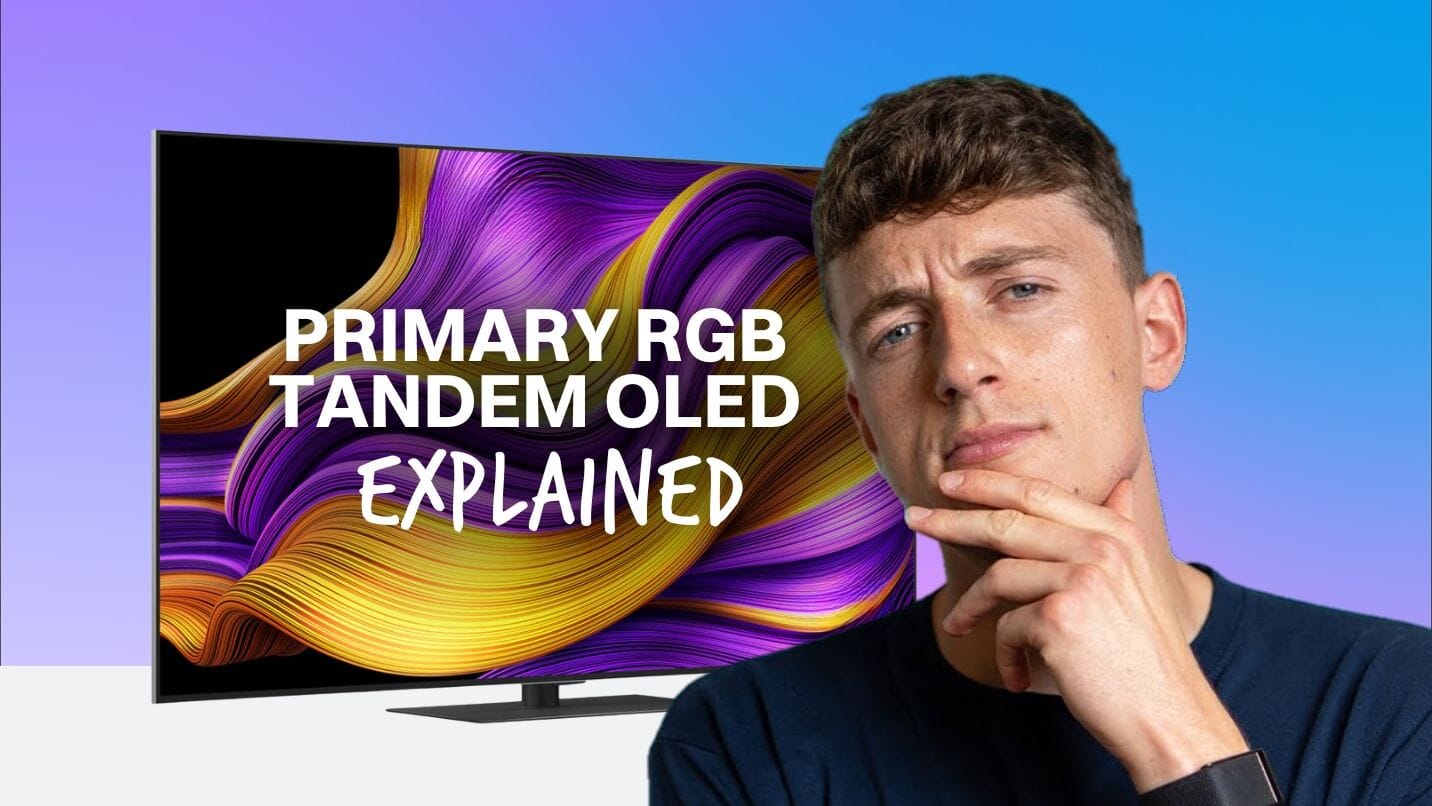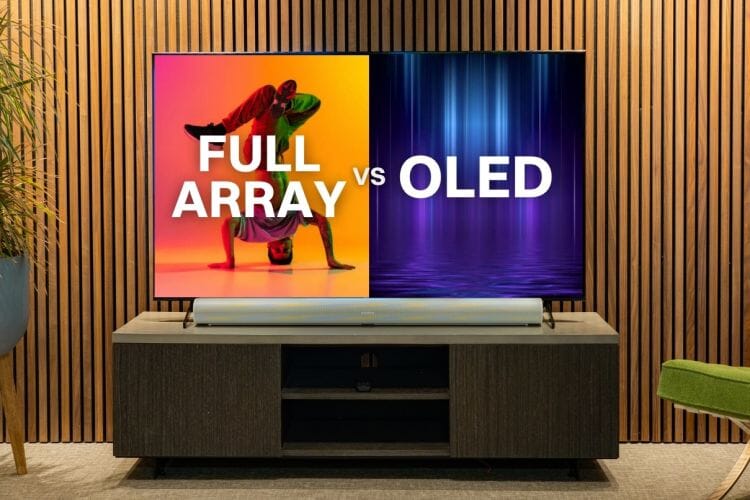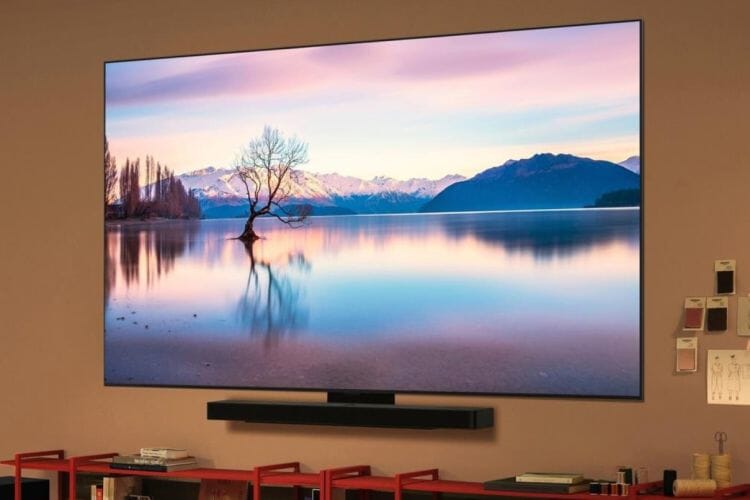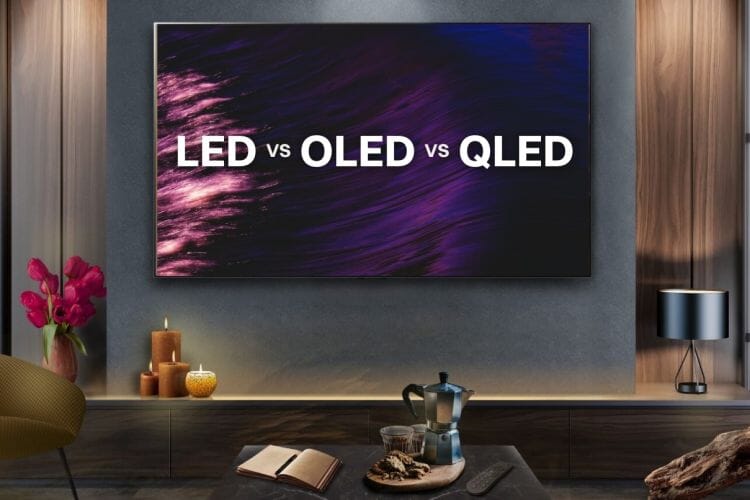Primary RGB Tandem OLED Explained.
OLED TVs have long been the benchmark for cinematic picture quality, offering pure blacks, wide viewing angles, and stunning colour. However, one challenge has always loomed large: brightness.
Over the years, we have seen significant advancements to address OLED’s brightness limitations. In 2025, we see another major leap forward with the introduction of Primary RGB Tandem OLED technology, often referred to as “Four-Stack” OLED. This next-generation panel is LG Display’s answer to the brightness battle - and it’s already making waves in flagship TVs like the LG G5, Panasonic Z95B and Philips OLED+950.
SHS Snapshot: Primary RGB Tandem OLED (Four-Stack) is LG’s brightest and most efficient OLED tech yet. Featured in flagship TVs like the LG G5 and Panasonic Z95B, it delivers up to 4,000 nits peak brightness and achieves around 20% energy savings by stacking four emitting layers. Each layer contributes to higher luminance and colour efficiency.
2025: Enter Primary RGB OLED with 4-Stack Tandem
This year, LG Display has taken a significant leap by replacing MLA in its top-tier OLED panel with Primary RGB OLED using a 4-stack tandem structure—a major leap in both brightness and performance.

What is Primary RGB OLED?
Unlike traditional WOLEDs (white OLED with colour filters), Primary RGB OLED uses separate red, green, and blue light-emitting layers, stacked vertically in a four layer structure.
Previously, LG panels used two blue-emitting layers with a single layer in the middle for red, green and yellow light. This new system introduces dedicated red and green layers, each illuminated with separate blue “emissive” layers.
In simple terms: Each colour now has its own dedicated light source, stacked together for better brightness, colour and efficiency.
This change and addition of an extra layer should dramatically increase the panel’s brightness potential and energy efficiency. For you as the end user, that should mean cheaper bills and a brighter performance for both light and dark spaces.
Performance enhancements: Brightness, colour and efficiency
With LG claiming up to 4,000 nits of peak brightness, the flagship G5 - featuring a Four-Stack panel - could be in contention for the brightest OLED TV of 2025. While real-world viewing may not reach those headline figures, LG has shared that the G5 is up to 40% brighter than last year’s LG G4.
Our early testing of the LG G5 confirms a notable step up in brightness. Additionally, a new anti-reflection coating has been added for a better viewing experience in bright rooms. And that’s not all. These new panels are set to be up to 20% more energy efficient due to improved light production.
Tandem OLED vs QD-OLED: Which is better in 2025?
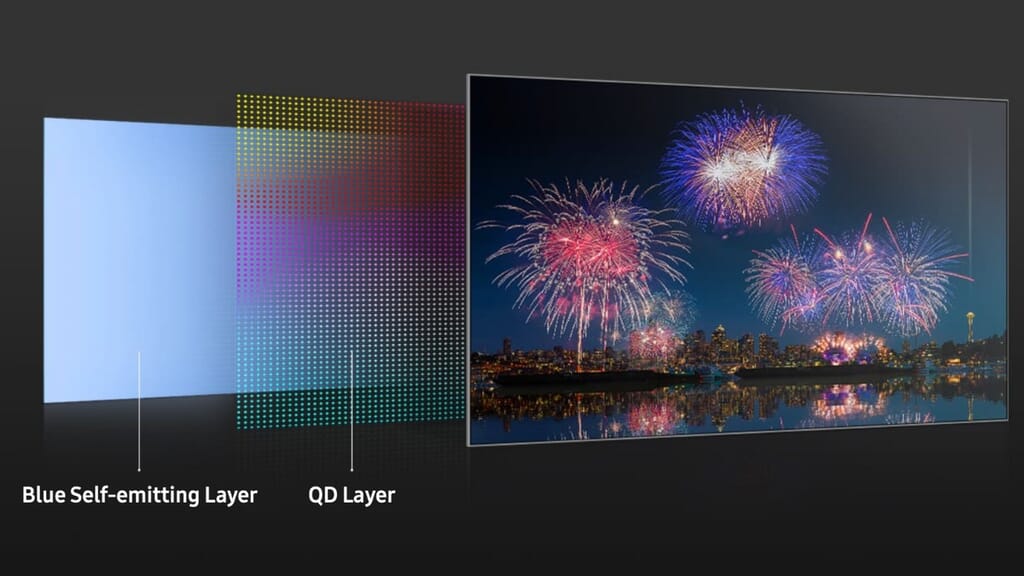
Developed by Samsung Display, QD-OLED TV panels use a blue OLED backlight with quantum dots converting light into red and green. The result? Improved colour volume and brighter images. Samsung and Sony have continued refining this tech in their 2025 flagship models.
The big question for OLED buyers in 2025: Primary RGB Tandem OLED vs QD-OLED—which is better?
With brands like LG and Panasonic backing Primary RGB OLED panels in their flagship models, and Samsung and Sony sticking with QD OLED for their flagships, the battle is heating up. The Samsung S95F and Sony Bravia 8 II both use QD OLED which is a tried and tested approach that has consistently delivered bright OLED performance with punchy colours, thanks to its use of quantum dots. However, it is still built around a single blue OLED layer, with colour conversion handled by quantum dots - meaning some light is lost in the process.
LG’s new four-stack system doesn’t rely on colour conversion at all. By directly emitting red, green, and blue light from separate layers, it can deliver cleaner, purer colour output and greater efficiency per pixel.
Their claims of up to 4,000 nits would put them at the top of the brightness leaderboard, but specs and claimed figures can certainly differ from real world testing. We are currently putting the 2025 flagship OLEDs to the test and will be sharing our results from our side-by-side comparisons soon.
Tandem OLED vs MLA (Micro Lens Array)
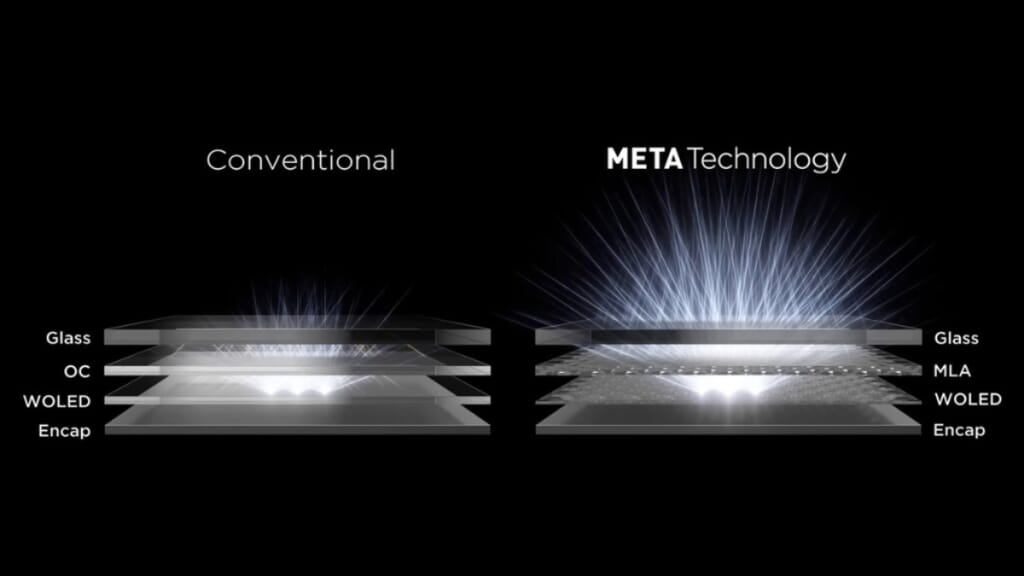
In 2023, LG Display debuted MLA in the LG G3 model. This saw a notable step up in brightness vs previous flagship OLEDs from the brand and they continued with this technology with their 2024 LG G4.
MLA or Micro Lens Array works by adding a microscopic lens layer above the OLED pixels. This layer redirects trapped light towards the viewer, delivering around a 30% boost in brightness without altering the core OLED panel structure.
We were surprised to see LG drop this technology in 2025, however they are promising a further 40% boost in brightness in the LG G5 vs last year's LG G4 with the use of Tandem OLED.
Our early testing supports these claims and while we still have more tests to run, we can see why LG have shifted towards Four-Stack to take brightness to another level.

Which TVs use Primary RGB OLED in 2025?
While flagship models such as the Samsung S95F and Sony Bravia 8 II are sticking with QD OLED in 2025, there are a number of models using new four stack panels this year.
LG’s flagship 2025 model, the LG G5, ditches MLA for this advanced panel, delivering LG’s brightest-ever OLED experience. It features the new Alpha 11 processor and supports up to 165Hz refresh rate, catering to gamers and fast-paced content. The LG G4 was our top OLED pick in 2024 so we are keen to see if this new generation can retain the title.
Panasonic’s flagship Z95B OLED also incorporated LG Display’s four-stack panel. However they have also added Panasonic's proprietary ThermaFlow cooling system which should help maintain optimal panel temperatures and ensure consistent performance. We are keen to see if this additional technology can help the Z95B to take the top spot from the G5 in 2025.
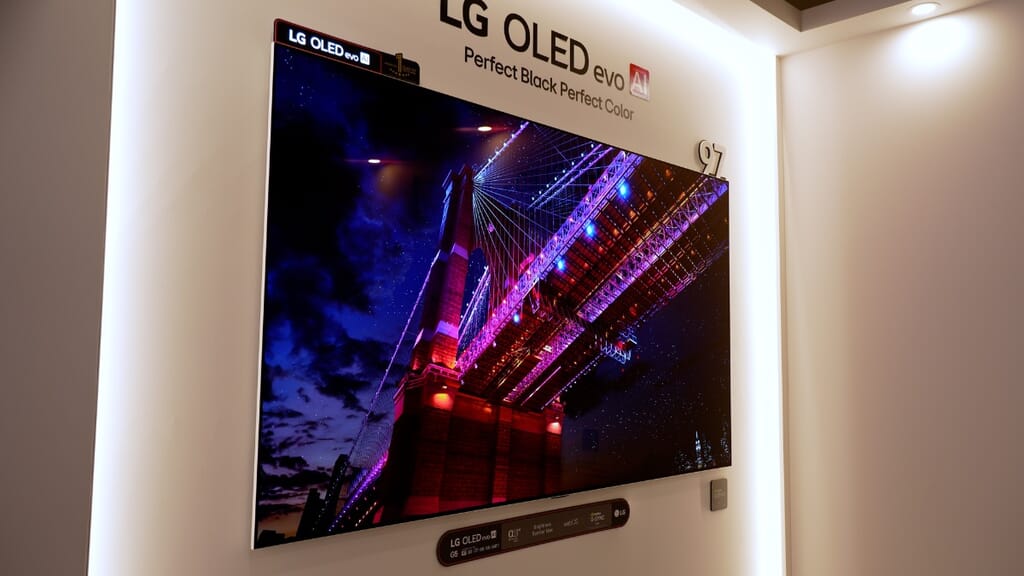
Final thoughts on Primary RGB OLED
The introduction of Primary RGB Tandem OLED is one of the most significant shifts in OLED technology in years. It doesn’t just improve upon previous designs, it replaces them entirely.
With brighter images, lower power consumption and uncompromised blacks, Four-Stack OLED is raising the bar for premium home cinema. But as always, there’s more to choosing the right TV than panel tech alone. Picture processing, smart features, design, and - of course - price all play a big role in the overall purchase decision.
One thing is certain: the OLED landscape is more competitive and exciting than ever.
The future of TV tech
Of course, there’s always the element of - what’s next? And looking ahead, the display technology landscape continues to evolve:
- Blue PHOLED panels: LG Display is reportedly developing OLED panels based on blue phosphorescence, aiming for even higher brightness and efficiency. These panels could potentially debut in 2026, offering improved performance over current Four-Stack panels.
- Sony’s RGB Mini LED technology: Sony is working on RGB Mini LED displays, which replace traditional white/blue LEDs with red, green and blue LEDs. This approach aims to enhance colour accuracy and brightness, with potential appearances in 2026 models.
- Quantum Dot Electroluminescent (QDEL) displays: Companies like Samsung and TCL are exploring QDEL technology, which utilizes self-emissive quantum dots for improved colour accuracy and energy efficiency. While still in development, QDEL displays could become a viable alternative to OLED in the coming years.
These advancements suggest that the competition in display technologies will continue, offering consumers a broader range of options to suit different preferences and needs.
Other Useful Content
For more information about screen types and TV technology, please take a look at our TV Buying Guide.
More On TV Tech:
>> LED vs. OLED vs. QLED - What Do They All Mean and Which Is Right for Me?
>> Full-Array vs. OLED: The Differences That Actually Matter
Helpful content:
Video: How To Choose The Right TV Screen Size



